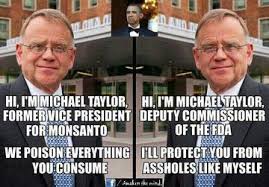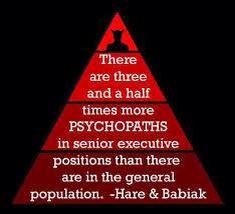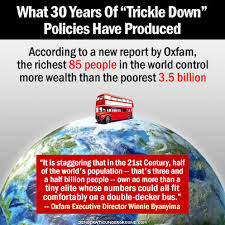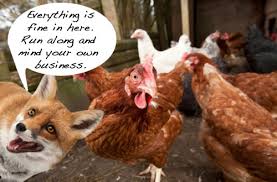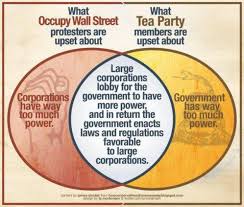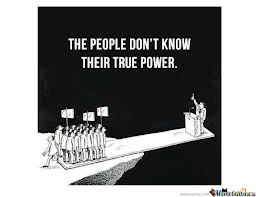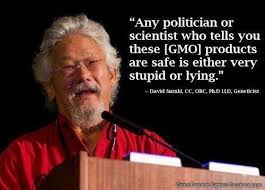Blog Archives
GMO Apologist Funding and the End of Democracy
I’ve been poking around for information on how the money flows from the GMO Lobby to the relatively small cadre of apologists who defend them. When clicking through links about genetic engineering (GE), the same names keep popping up. If you follow the pro-GMO money it tends to lead back to the very corporations who stand to rake in massive profits by keeping people ignorant about what goes into their food supply.
As a starting point, let’s look at Kellogg’s funding of a recent study suggesting that 100 billion cows were healthy right before they were slaughtered for food after ingesting GE feed for only 90-120 days. The study came out of the University of California at Davis, which gets lots of research funding from ‘industry partners’ .
When I started clicking links to the Kellogg Foundation I found some rather odd data. The branding on their website is all about helping children. Nothing in the mission statement about the quality of cow feed. So I searched their grants page for UC Davis and found a number of awards adding up to over six million dollars, only a pittance of which went to grants that had anything to do with children. I fail to see how grants to livestock feed studies mesh with the stated mission of the Kellogg fund.
This sort of inconsistency leads to accusations of corruption and money laundering akin to what the Grocery Manufacturers Association did during GMO labeling campaigns in California and Washington state. Kellogg’s funnelled money into both of those campaigns due to concerns that GMO labeling will eat further into their profits, down 16% in the 2nd quarter. This setback was attributed to changes in eating habits rather than the boycott of Kellogs products to protest their opposition to labeling their GE foods.
I’m not attacking the scientists involved in pro-GE studies. They probably believe that they’re doing good work for the benefit of mankind. Noam Chomsky explained in Manufacturing Consent how the systemic filters ensure that the people who get ahead in the media are the ones whose outlook meshes with that of their corporate masters. There are similar filters operating in academia.
Let’s turn our attention to the cozy group of GMO cheerleaders who jumped on that feeding study like a duck on a junebug and started sharing the shit out of it. I first found it on a Facebook page and followed the links to an article in Forbes by Jon Entine. He’s head of an outfit called the Genetic Literacy Project. Sourcewatch follows the funding through front groups and networked organizations that are funded by right-wing think tanks and ultimately the Koch Brothers, who also support anti-labeling laws.
When I started sharing my views on Twitter, I got into a lengthy exchange with Kevin Folta at the University of Florida. I didn’t find any links to Kellogg’s there, but I did stumble onto some fascinating reports on how the Koch Brothers bought a department and tried to buy the presidency of another of Florida’s state universities. Of the 12 institutions in Florida’s state system, UFlorida has the largest endowment and enrollment and also appears on the list of recipients of Koch brothers’ largesse. Unfortunately, a lack of transparency makes it impossible to determine how much Koch influence might be exerted at UF. Regardless, it is clear that Folta has solid connections to the Genetic Literacy Project and other GMO cheerleaders who present at the same conferences.
Why should you care who funds whom? It’s not just that a handful of corporations are trying to get a stranglehold on the world’s food supply. You should care that YOU DON’T LIVE IN A DEMOCRACY ANYMORE. Let that sink in. This is not just my opinion. Princeton academics have documented this fundamental shift to oligarchy. Predictably, this story received almost no coverage in the mainstream media. Chris Hedges describes what has happened as a corporate coup d’etat. The same kind of stealth tactics that Big Ag pursues have also been used with great success by Big Pharma, Big Oil and Big Tobacco and Wall Street took it to a whole new level. Naomi Klein‘s new book, does a great job of explaining how capitalism is destroying the biosphere.
If the corporations have already won, as Hedges and a great deal of evidence suggests, what are the people to do? Citizens in the U.S. and Canada will have to take back democracy from the ground up, starting at the municipal level. (Take a look at what they’re doing in Seattle if you need some inspiration.) In every election at the provincial/state or federal level the number one issue we need to demand accountability on in Canada is ELECTORAL REFORM. In the U.S., campaign finance needs reform to address the corruption and legal bribery that has quietly robbed the people of their power.
Expect the bullshit machine try to scare you with all manner of reasons to keep the status quo. Don’t drink their kool-aid. An estimated 400,000 people who hit the streets of New York on September 21st to demand action on climate change were just the tip of the iceberg. As more North Americans realize their country has been stolen by the .001%, I predict we will see even larger crowds in the street. The police state cannot prevail against a populist uprising.
Billionaire venture capitalist Nick Hanauer points out that when economic inequality reaches the record levels we are seeing, the result tends to be an uprising or a police state. Then Ferguson happened and showed America the police state had already arrived. Peace is a good thing. Nobody wants a violent revolution, but maintaining the status quo is not an acceptable option to anyone who values their civil rights or the biosphere we depend on for survival. If you don’t get off your arse and demand your democracy back, you will condemn your children to live as serfs on a poisoned planet, who think they are ‘free’ because the media told them so.
ps; If you found this enlightening, please consider sharing it with others.

